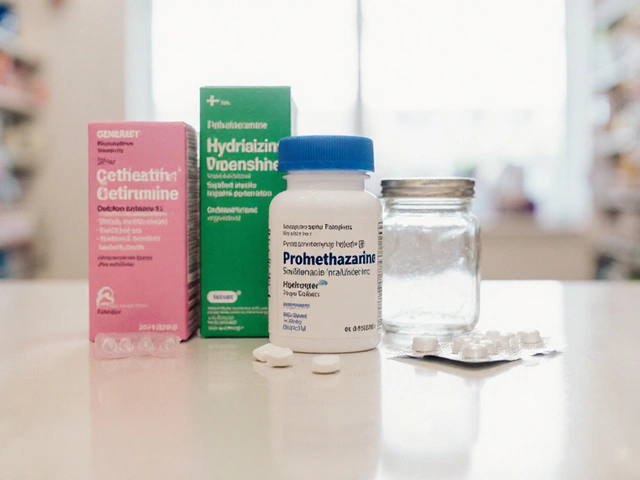Inhaler comparison: how to pick the right inhaler for you
Choosing an inhaler isn’t just about the drug inside — the device matters. A perfectly prescribed medicine won’t help if the device is hard to use or you don’t get the full dose. This page gives clear, practical differences between common inhalers and steps you can take right now to find one that fits your routine and breathing needs.
Which inhaler types and medications matter
There are three common device types: metered-dose inhalers (MDIs), dry powder inhalers (DPIs), and soft-mist inhalers. MDIs spray a measured dose and often need a spacer for best delivery. DPIs rely on your breath to draw the medicine out, so they need a strong, fast inhale. Soft-mist inhalers produce a slow, fine mist and are easier to time with breathing.
Drugs fall into categories: short-acting relievers (salbutamol/albuterol), long-acting bronchodilators (LABA or LAMA), and inhaled corticosteroids (ICS) for inflammation. Combo inhalers mix ICS+LABA or LABA+LAMA. For example, formoterol/budesonide combos often act faster on symptoms than salmeterol/fluticasone because formoterol has quicker onset. That matters if you need both daily control and faster relief.
How to compare performance, safety and daily use
Onset: If quick relief matters, look for formoterol-containing combos or a fast-acting reliever MDI. Duration: some LABAs last 12 hours, others 24 — check dosing frequency.
Ease of use: Try the device. DPIs can be awkward if you have weak inhalation. MDIs need coordination between press and breath — a spacer fixes that. Soft-mist devices are often the simplest for people who struggle with timing.
Side effects: Local effects like thrush are more common with ICS — rinse your mouth after use. Systemic effects depend on dose and frequency; lower-dose combos tend to reduce steroid exposure.
Cost and availability: Brand-name combos can be pricier. Generic inhalers, patient assistance, or prescription savings cards often cut costs. Check if your pharmacy stocks your chosen device — switching devices can change how much medicine reaches your lungs.
Practical tips before you decide
1) Watch a demo or ask your clinician to show the inhaler technique. Mistakes are common and easily fixed. 2) Match the inhaler to your lifestyle — portability, number of puffs per day, and cleaning needs matter. 3) If you have poor inspiratory flow, avoid DPIs. 4) Ask whether the inhaler requires priming or special cleaning. 5) If you use an MDI, consider a spacer to improve dose delivery.
Final step: try the inhaler under supervision and schedule a quick follow-up to check technique and symptom control. If your symptoms don’t improve or side effects appear, switch the device or medication with your clinician’s help. A good match makes treatment simpler and breathing better — and that’s the main goal.
11
Symbicort Alternatives: What Pharmacists Want You To Know
Wondering what can replace Symbicort? Get honest pharmacist answers about dose swaps, switching safely, and how other options stack up against Symbicort.
Latest Posts
Popular Posts
-
 Amyotrophic Lateral Sclerosis: How Riluzole Slows Neurodegeneration and Extends Life
Amyotrophic Lateral Sclerosis: How Riluzole Slows Neurodegeneration and Extends Life
-
 GLP-1 Side Effects: How to Manage Nausea, Dosing, and Realistic Expectations
GLP-1 Side Effects: How to Manage Nausea, Dosing, and Realistic Expectations
-
 Pharmacist Recommendations: When to Suggest Authorized Generics
Pharmacist Recommendations: When to Suggest Authorized Generics
-
 Chronic Pancreatitis: Managing Pain, Enzyme Therapy, and Nutrition
Chronic Pancreatitis: Managing Pain, Enzyme Therapy, and Nutrition
-
 Small Intestinal Bacterial Overgrowth: Breath Tests and Treatment Explained
Small Intestinal Bacterial Overgrowth: Breath Tests and Treatment Explained



